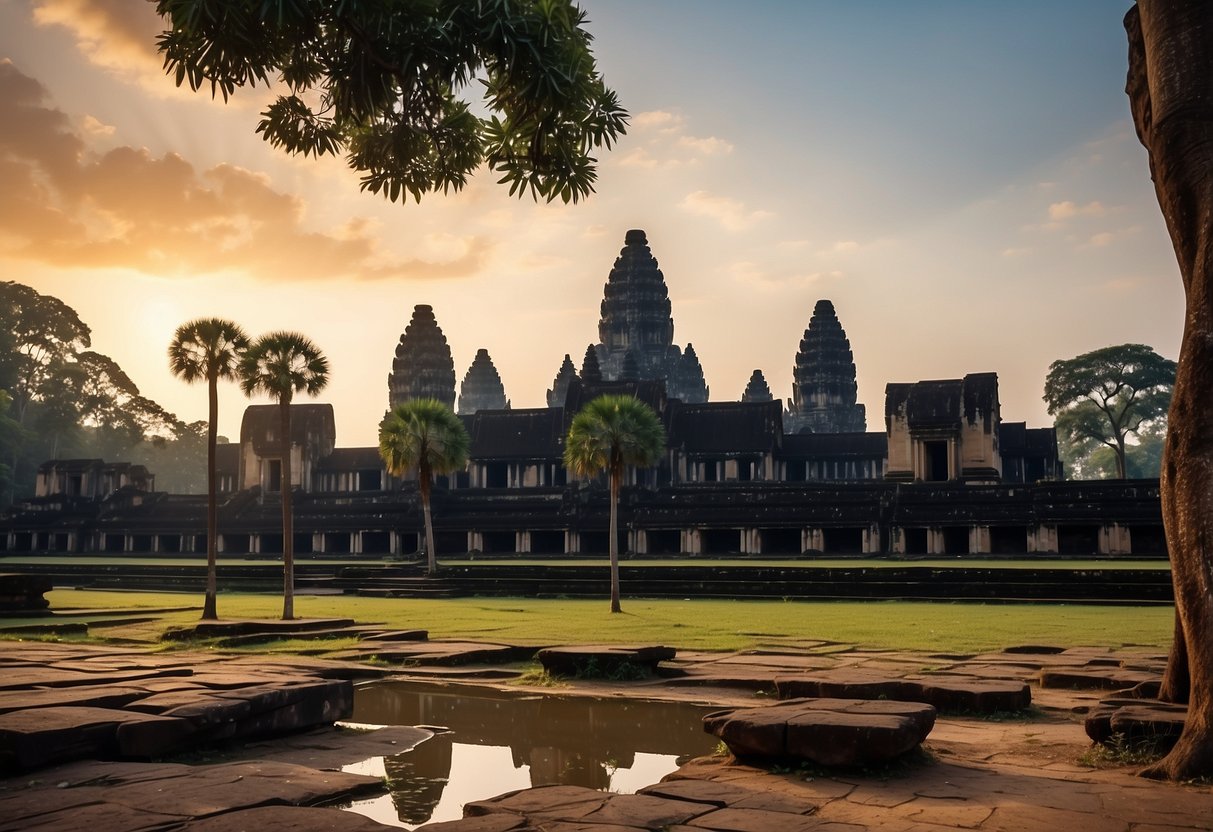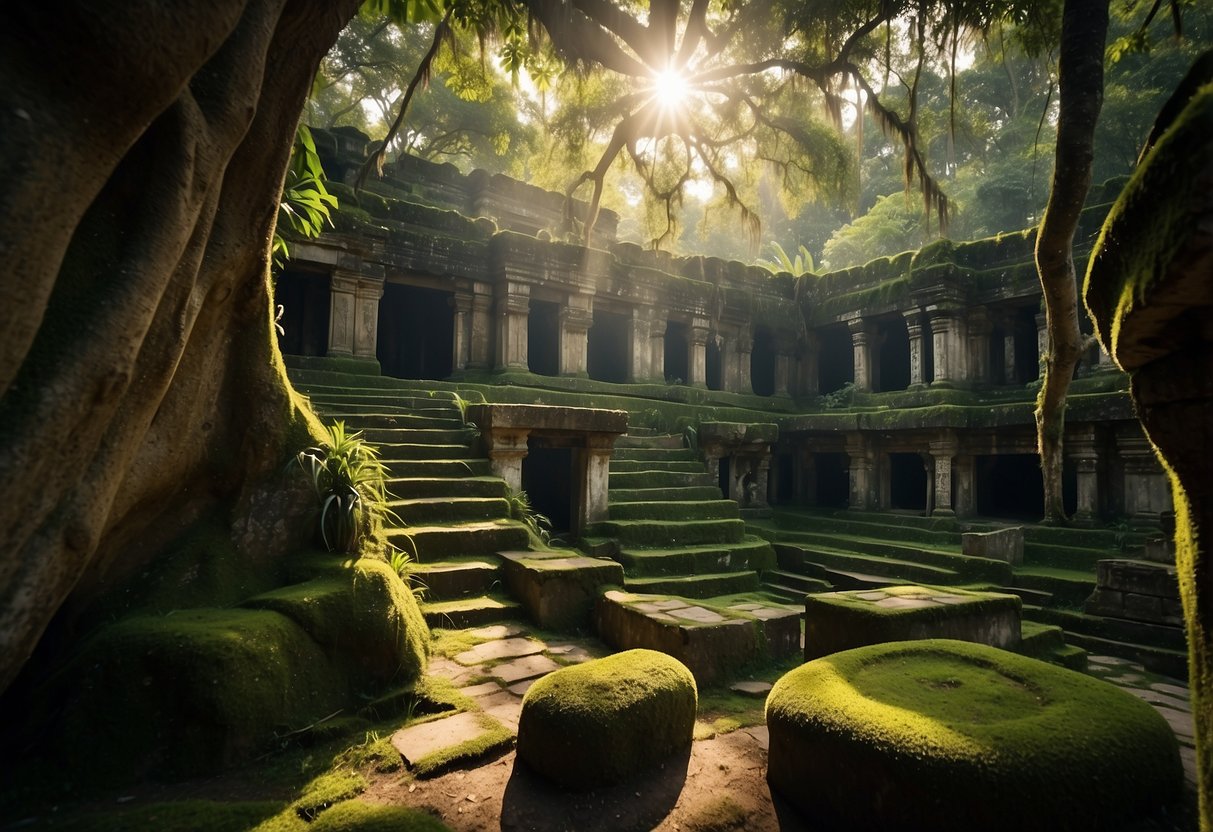
In the Realm of Nature: Temples Reclaimed

The temples of Angkor Wat have seen nature reclaim many of their structures, creating an awe-inspiring blend of architecture and wild landscapes. Visitors find themselves captivated by sites like Ta Prohm and Beng Mealea, where trees and vines seamlessly merge with the ancient stone walls.
The Enigmatic Ta Prohm
Ta Prohm stands as one of the most iconic examples of nature’s reclamation. Large tree roots engulf the temple, intertwining with the stonework in a mesmerizing display. Known familiarly as the “Tomb Raider Temple” due to its appearance in the 2001 film, Ta Prohm offers an evocative atmosphere that attracts photographers and history enthusiasts alike.
Maintained deliberately in its “natural state,” Ta Prohm allows visitors to experience an untouched version of Angkor’s heritage. Its narrow corridors and partially collapsed structures invite exploration, revealing hidden bas-reliefs and carvings behind the curtain of foliage. This unique blend of art and nature makes it a must-visit site.
Nature’s Embrace at Other Sites
Beyond Ta Prohm, other temples like Banteay Kdei and Beng Mealea also showcase the dynamic relationship between natural forces and ancient constructions. Banteay Kdei, located near Ta Prohm, exhibits similar elements with its corridors overrun by plant life, creating an intimate, less-touristy atmosphere.
Beng Mealea, often called the “Jungle Temple,” lies farther afield and is more secluded. Nearly devoured by the forest, it attracts those seeking to explore in relative solitude. Vines and roots here are more pronounced, presenting an almost surreal landscape that leaves a lasting impression.
Both sites offer a glimpse into how nature and architecture intertwine, providing a serene and compelling experience for travelers.
Embracing Spirituality and Religion
Angkor Wat’s temples are a testament to the interwoven spirituality that shaped and continues to influence these sacred spaces. They reveal a blend of Hindu and Buddhist mythologies, interlacing their legends and teachings.
The Influence of Hindu and Buddhist Mythologies
Angkor Wat initially embraced Hindu mythology, featuring deities like Vishnu. As a Hindu temple, its architecture showcases narratives from the Ramayana and Mahabharata. Iconography often depicts Vishnu’s incarnations, or “avatars”, carved into the temple’s grand bas-reliefs.
Transitioning to Buddhism introduced Buddhist mythologies. The temple began embodying symbols of enlightenment and the Buddha’s life. Its transformation into a Buddhist monastery integrated teachings both physically, through statues, and spiritually, reflecting a transcendental evolution over time. This duality in influence highlights the temple as a bridge between two powerful mythological traditions.
Continued Spiritual Legacy
Today, Angkor Wat remains an active spiritual site. Pilgrims and monks visit the complex, practicing rituals and meditations pertinent to both Hindu and Buddhist traditions. The spiritual legacy persists, making the site not only a historical monument but a living place of worship.
The intricate carvings and serene atmosphere facilitate a connection between visitors and the divine. People from diverse backgrounds experience the temple’s spirituality, reflecting a continuing legacy that spans centuries and influences a global devotion to these ancient spiritual practices.